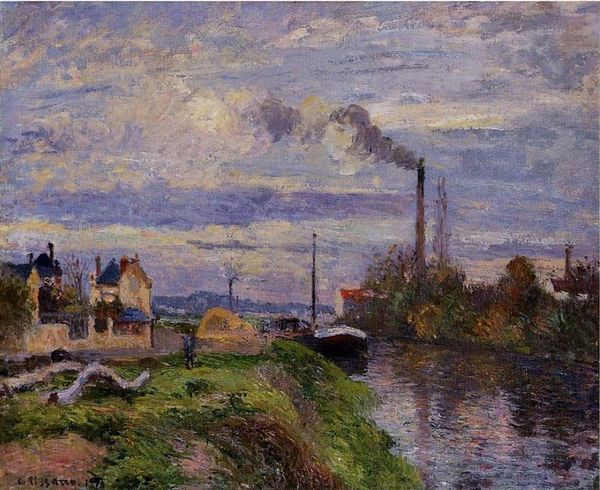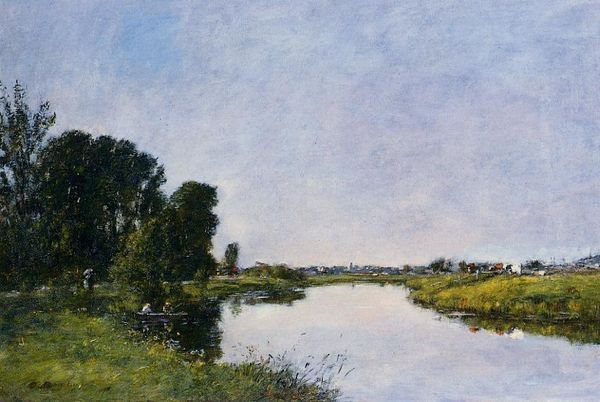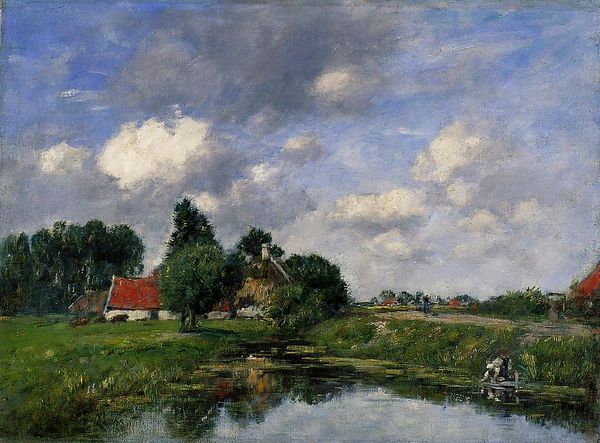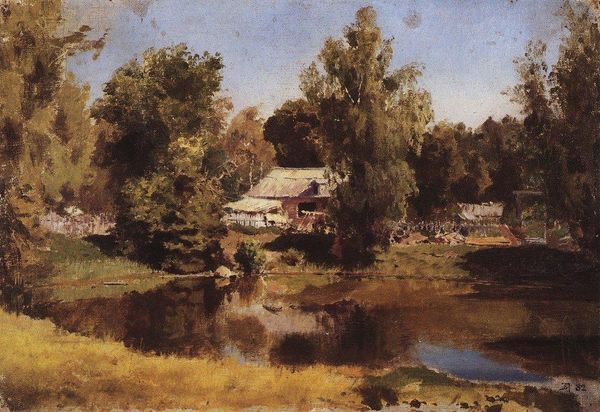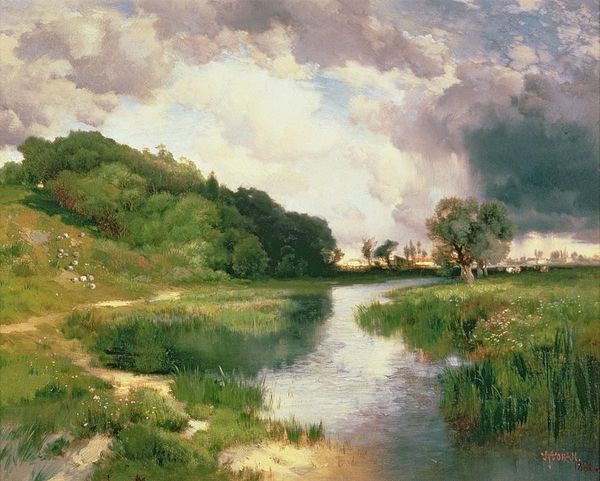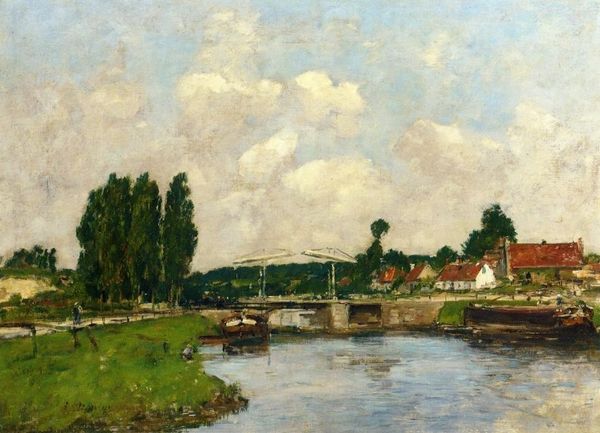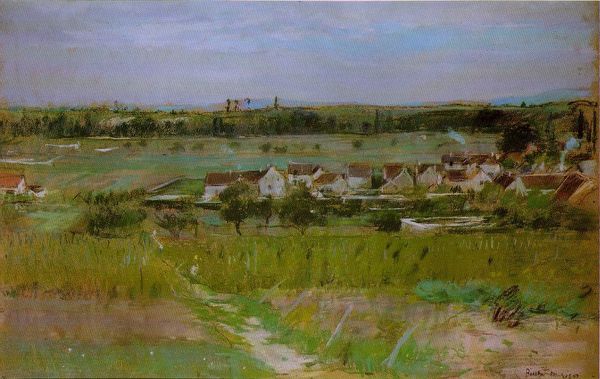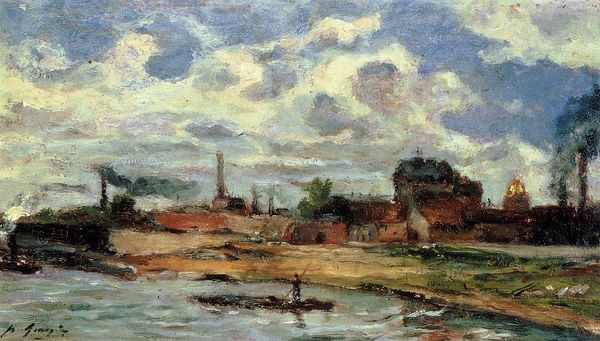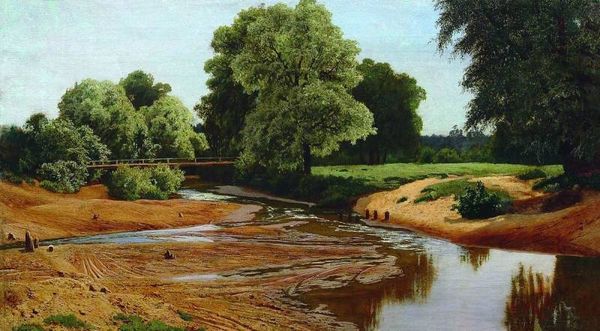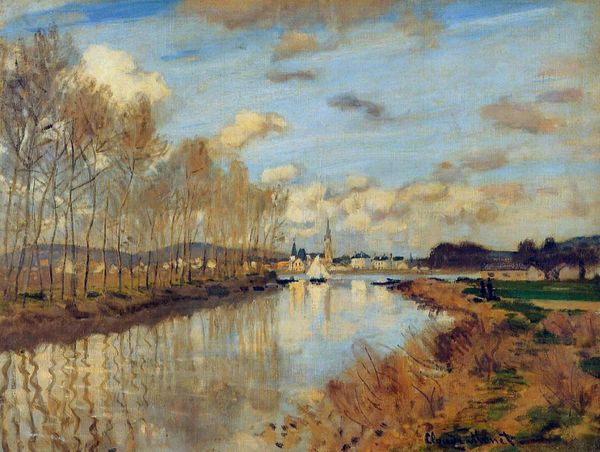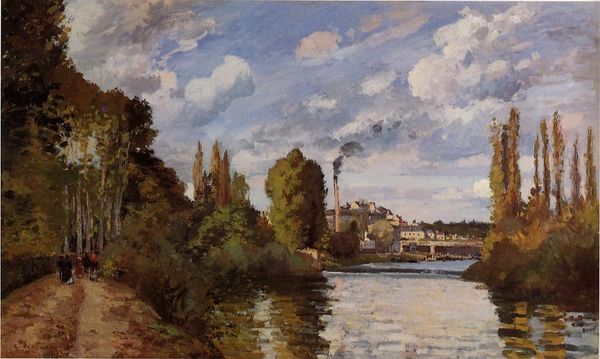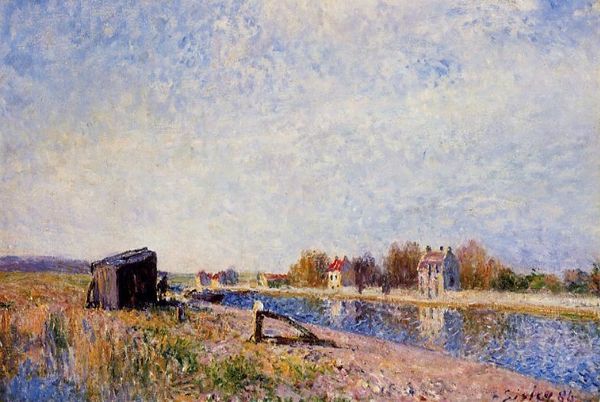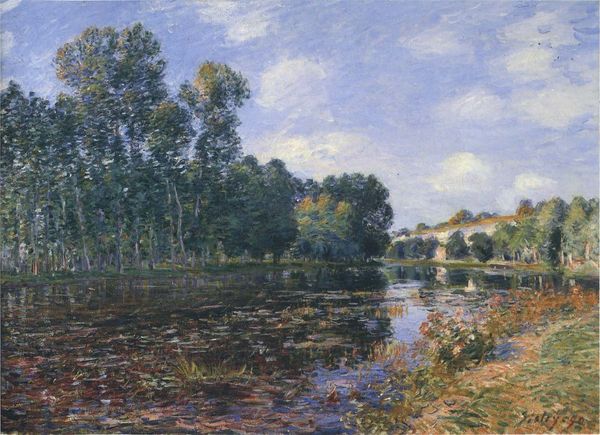
painting, plein-air, oil-paint
#
painting
#
impressionism
#
plein-air
#
oil-paint
#
landscape
#
oil painting
#
cityscape
#
modernism
Dimensions: 45.3 x 55 cm
Copyright: Public domain
Curator: I always feel a strange mix of serenity and unease looking at this… like the world holding its breath. Editor: That’s quite an immediate response. What is it about this oil on canvas work by Camille Pissarro, “The River Oise near Pontoise,” created in 1873, that elicits such a reaction? Curator: Well, on one hand, you’ve got this idyllic scene of the river reflecting the sky. And the flowers are this incredible field of hazy color. But then your eye drifts to those smokestacks. There’s something almost ghostly about them. Editor: Ah, the formal tensions emerging from the pictorial field! Observe how Pissarro structures our gaze: the verticality of the smokestacks interrupts the pastoral tranquility, suggesting a dialectic between nature and industrialization so typical in Impressionist cityscapes. The clouds mirror the pollution—note the textural affinity. Curator: Mirroring pollution. I like that. It’s true. There's this undeniable tension between the charm and the intrusion, like he’s showing us beauty already being stained. I bet he painted it en plein air, you know? The air itself feels rendered in the paint! Editor: It's likely Pissarro did execute this outdoors, to best capture transient effects. What speaks to you in his brushwork? Curator: It's broken, almost pointillist in places even before the height of pointillism. He captures how light fractures. Maybe, if you squint, the smokestacks themselves start dissolving too… turning into just another shimmering form. An invitation to reimagine industrial might? Editor: An optimistic proposition indeed, for this historical moment. Considering his political leanings, maybe Pissarro presents a cautiously transformative view of modernity, blending nature’s enduring cycles with industry’s transient presence. I'm still stuck on that tension. The reflection offers harmony—until the pipes erupting in the distance destabilize our peace. Curator: Precisely. It’s unsettling, yet still, undeniably… beautiful? Editor: Indeed, in this picturesque encapsulation, the intrinsic ambiguity—the dialectical tension between what endures and what encroaches—provokes deeper reflection on our own epoch. Curator: And I’m feeling that. Thank you. I'll carry it on as I go through the museum now, with both gratitude and dread.
Comments
No comments
Be the first to comment and join the conversation on the ultimate creative platform.
